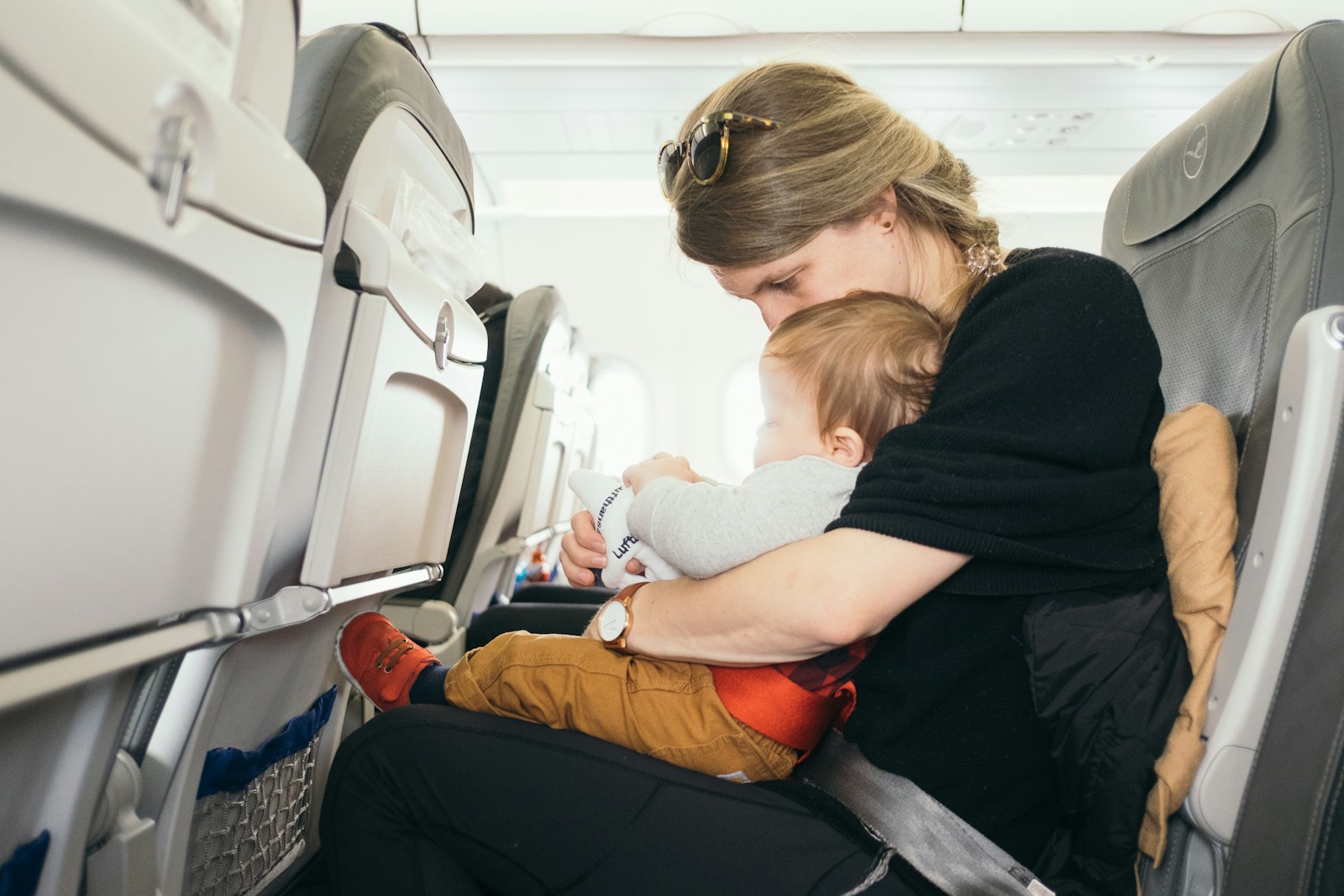Traveling with a baby for the first time can be exciting and daunting for new parents. Taking your little one on their first vacation may bring up emotions and questions. Will it be too overwhelming? Should we wait until they’re older? These are all valid concerns, but with proper planning and preparation, baby travel can be a wonderful experience for the whole family. In this blog post, we will discuss the key factors to consider when deciding whether to fly or stay grounded with your little one, as well as baby travel essentials, tips, and tricks for a successful and stress-free baby travel experience.
Reader's Roadmap
Understanding the pros and cons of flying with a baby
Flying with a baby brings its own set of advantages and challenges that parents should carefully consider. On the positive side, air travel can be significantly faster than other modes of transportation, making it a convenient option for covering long distances quickly. This means less time traveling and more time enjoying your destination. Airlines also offer assistance for families with infants, such as pre-boarding privileges and baggage allowances for strollers and car seats.
However, flying with a baby also presents potential difficulties. The most common concerns include:
- The baby’s ear discomfort during takeoff and landing.
- The risk of heightened exposure to germs and illnesses.
- The possibility of dealing with an upset or crying baby in a confined space.
Additionally, navigating airport security with a baby and all their necessities can be stressful and time-consuming. Parents should weigh these factors based on their circumstances, the baby’s health and temperament, and the flight length. Considering the baby’s feeding and sleeping schedule is crucial when planning flight times to minimize disruptions. Understanding these pros and cons is vital in deciding whether air travel is the right choice for your baby’s first vacation.
Health and safety considerations for baby travel
When planning baby travel, health and safety are paramount. Ensure your baby is up-to-date on vaccinations and carry a copy of their medical records. Consult with your pediatrician, especially if traveling internationally, to discuss any necessary precautions. Pack a well-stocked baby first-aid kit, including items for fever, minor cuts, and insect bites. Choose accommodations and destinations known for their cleanliness and family-friendly amenities. Always use an appropriate car seat for travel by car or plane, and remember to sanitize surfaces and toys to minimize germ exposure regularly. Prioritizing these health and safety measures will help protect your baby throughout your journey.
How to prepare for your baby’s first flight
Preparing for your baby’s first flight involves thoughtful packing and organization. Start by selecting a diaper bag that can double as your travel luggage, ensuring it fits airline specifications for carry-on items. Pack more diapers and wipes than you think you’ll need, along with a change of clothes for you and the baby. Include small toys or books to keep your baby entertained. Don’t forget snacks, formula, or breast milk, adhering to TSA guidelines. Lastly, consider a baby carrier for easier boarding and deplaning, keeping your hands free to manage documents and travel luggage.
Alternatives to flying: Exploring other modes of travel
Numerous other travel options exist for families hesitant about taking a baby on a plane. Road trips in a personal vehicle allow for a flexible schedule, easy access to baby essentials, and frequent stops to cater to your little one’s needs. Trains offer a more relaxed pace with room to move around, making it a comfortable option for longer journeys. For a scenic and leisurely experience, ferries allow you to enjoy the water while traveling to your destination. Each alternative has its unique benefits, allowing parents to choose the best mode of travel for their baby’s comfort and their family’s preferences.
Creating a baby-friendly itinerary
Designing a baby-friendly itinerary means prioritizing activities and destinations accommodating to young children. Look for locations with baby-changing facilities, quiet areas for feeding, and spaces for stroller access. Opt for sightseeing spots that allow for regular breaks and offer shade and rest areas. Choose child-friendly attractions like parks, aquariums, and interactive museums that won’t overwhelm your baby. Incorporating leisure time into each day ensures you can attend to your baby’s needs without rushing, making the vacation enjoyable for everyone involved.
Tips for staying calm and enjoying the journey
To ensure a calm journey and enjoyable baby travel experience:
- Stay flexible with your plans and maintain a positive mindset.
- Pack a familiar item for your baby, like their favorite tummy time mat, to provide comfort and a sense of routine amidst new surroundings.
- Remember, unexpected moments can lead to cherished memories.
- Keep your baby engaged with soft toys and soothing music, and don’t hesitate to take breaks when needed.
Embracing the unpredictability of traveling with a baby can transform challenges into adventures, making your first vacation together one to remember fondly.
Whether you fly or explore alternative travel options, understanding and adapting to your baby’s needs is key to a successful trip. Remember, the goal is not just to reach a destination but to cherish the moments and bond as a family. Embrace the journey with an open heart and mind, and you’ll navigate your baby’s first vacation with confidence and joy.







Leave a Reply
View Comments